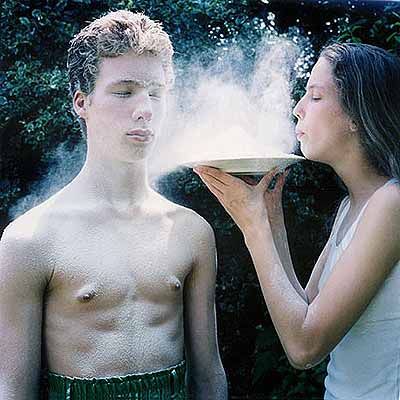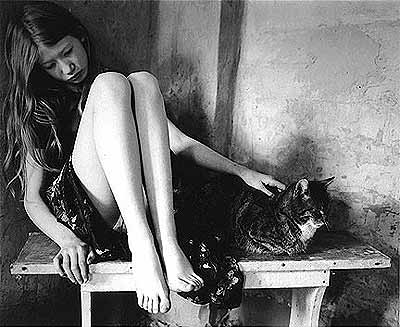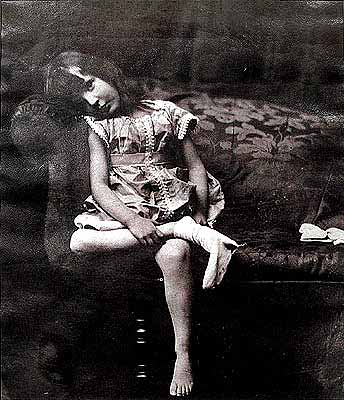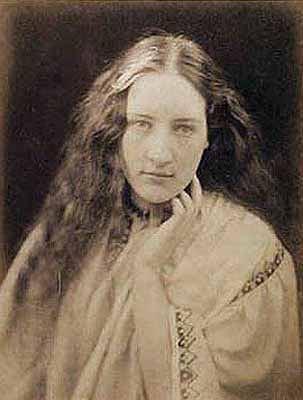
Moti Mentali – Mirroring Victorian and Contemporary Photography
Julia Margaret Cameron » Lewis Carroll » Rineke Dijkstra » Ingar Krauss » Hellen van Meene »
Exhibition: 2 Oct – 15 Nov 2003
Marvelli Gallery
526 West 26th Street, 2nd Floor
NY 10001 New York
+1-212-6273363
info@marvelligallery.com
www.marvelligallery.com
by appt

Marvelli Gallery is pleased to present “Moti Mentali – Mirroring Victorian and Contemporary Photography”, a group exhibition of photographs by Julia Margaret Cameron, Lewis Carroll, Rineke Dijkstra, Ingar Krauss and Hellen van Meene. The show, curated by Marcello Marvelli and George Robertson, will be on view until November 15. The exhibition focuses on a specific kind of portrait in photography: idiosyncratic portraits that expose intense emotions or spirit. The title of the show, “Moti Mentali” ("motions of the mind") is a richly nuanced Italian phrase used by Leonardo da Vinci to described the ability of some portraits to capture a transitory psychological state. In our search for portraits with this intensity and immediacy we have found that there are a number of photographers who have been successful at capturing these fleeting states using children and adolescents as their subjects, and the exhibition will focus only on these subjects. These photographers include some of the most interesting artists in contemporary photography: Rineke Dijkstra, Hellen van Meene and Ingar Krauss. There is a substantial and intriguing affinity between their work and the work of the Victorian photographers Lewis Carroll and Julia Margaret Cameron, which gives a rich historical context to the contemporary artists, and a contemporary point of access to the historical work. These resonances invite a more layered interpretation of all the photographs in the show. Each picture is both staged and spontaneous, artificial and private. In them, children and adolescents take the scene and look into the camera with bold awareness. Their emotions and psychological concentration become spontaneously visible. In pictures of subtlety and beauty, they become vessels for our adult feelings of solitude, wonder, vulnerability, willingness, desire, sadness, sensuality, sweetness, melancholy, and innocence. In their inability to examine or rationalize their own emotions, children and adolescents represent an “alternate reality, a metaphysical state of pre-knowledge that grants the young… a license to reveal to adults something of their own moral condition (Nickel)”. These portraits often entail hints of made-up narrative that invite us to bring our own imaginations to bear on them. These subtle narratives and the psychological ambiguity of these pictures emphasize the active role of the viewer, who can project her/his own feelings on these images. As Michael Kimmelman recently wrote in the New York Times about Lewis Carroll photographs:”...Flora fixed on the camera with a look that is somewhere between imperial and heartbroken. We read into it what we wish...It is a poignant look of innocence on the verge of being lost. Or is this just our imagination?” The formal and psychological parallels between the Victorian and Contemporary artists in the exhibition seem to highlight a common psychological sensibility between the two ages, reinforced by the number of museum exhibitions and monographic studies of Victorian artists in recent months. Often looked with suspicion until recently for their morbid and unsettling atmospheres and their elaborate allegories, these Victorian photographs can now be understood as antecedents to the recent photography of Cindy Sherman and other younger artists like Anna Gaskell and Anna Starkey. They suggest a growing contemporary interest in visual strategies that pre-date modernism. For more information or images of the photographs included in the show, contact Marcello Marvelli or Monica Espinel at 212-627 3363 or info@marvelligallery.com.

